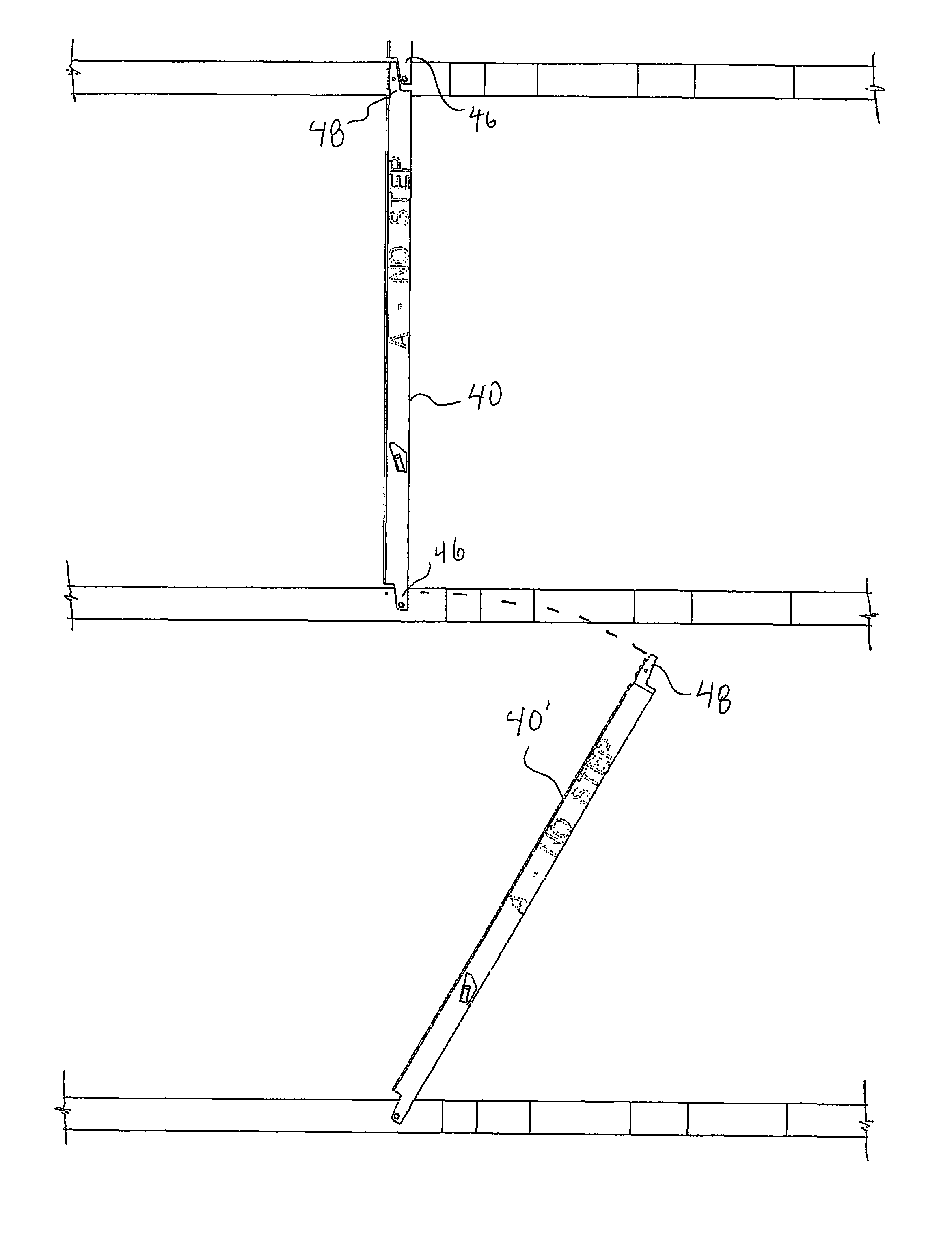Structural support spacer
a technology of structural support and spacer, which is applied in the direction of girders, joists, shores, etc., can solve the problems of less than safe intermediate placement, tedious progress, and safety hazards for workers, and achieve the effect of adding rigidity or suppor
- Summary
- Abstract
- Description
- Claims
- Application Information
AI Technical Summary
Benefits of technology
Problems solved by technology
Method used
Image
Examples
Embodiment Construction
[0048]Referring to FIG. 1, the framing of a wood frame building 20 is illustrated. Structural support members 22, configured as planar roof trusses rest on a building wall structure 26 shown in dashed lines. FIG. 2 illustrates a stack 32 of such roof trusses bound together as they would be shipped to the job site from a truss manufacturing facility. The trusses of the wood frame building have spacers 40 in place for maintaining the spacing between the trusses during erection of the building. The spacers 40 are illustrated on the trusses in the stack of trusses in a transport and handling position, laying flush against an upwardly facing surface 43 of the trusses. FIG. 1 illustrates most of the spacers in a use position extending at or about 90 degrees from the planar trusses.
[0049]FIGS. 4-13 provides several detailed views of an exemplary structural support member spacer 40 according to certain embodiments. The spacer may conveniently be formed from sheet metal; other materials such...
PUM
 Login to View More
Login to View More Abstract
Description
Claims
Application Information
 Login to View More
Login to View More - R&D
- Intellectual Property
- Life Sciences
- Materials
- Tech Scout
- Unparalleled Data Quality
- Higher Quality Content
- 60% Fewer Hallucinations
Browse by: Latest US Patents, China's latest patents, Technical Efficacy Thesaurus, Application Domain, Technology Topic, Popular Technical Reports.
© 2025 PatSnap. All rights reserved.Legal|Privacy policy|Modern Slavery Act Transparency Statement|Sitemap|About US| Contact US: help@patsnap.com



